As a young child, Jane Goodall had a toy chimpanzee. She named him Jubilee. When Jane was eight years old, she read The Story of Dr. Doolittle and the Tarzan books by Edgar Rice Burroughs. She dreamed of living in Africa. “I was absolutely fascinated with the idea of being out in the jungle, out with the animals, being a part of it all,” she said later.
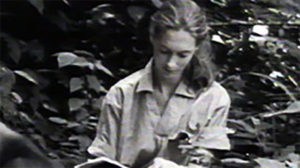
On July 14, 1960, Jane’s dream came true. Famed paleoanthropologist Louis Leakey found in Jane a patient, determined young woman, with the right qualities necessary to study the behavior of chimpanzees in the wild. Jane traveled to the Gombe Stream Game Reserve in Tanzania (then Tanganyika) to record her observations not knowing that her research would be groundbreaking.
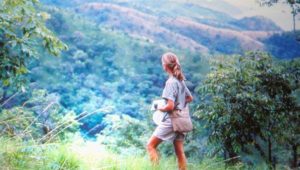
At first, Jane was unable to find chimpanzees or was only aware that they were in the jungle near her. Once she found a high peak that overlooked two valleys, Jane was able to follow the daily interactions and behavior of the chimps through her binoculars. They were aware of her presence and over time expected that she would be there watching them. Through Louis Leakey’s insistence, a filmmaker captured Jane and her observations.
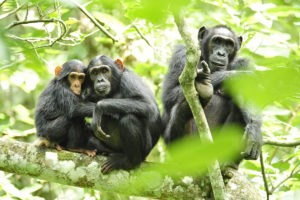
Jane learned that chimps are nomadic in nature, searching over two to six miles a day for food. She learned that mothers and young chimps stay together and that males are not part of child raising. And she watched the chimps spend part of their day resting and grooming each other.
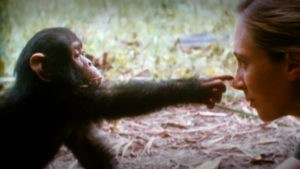
When a small group of chimps let Jane come near them, it was the “proudest and most exciting moment of my life,” she said. Jane named the matriarch of the group, Flo. She observed Flo’s infant, Flint, as he grew and his sister Fifi’s intense interest in him. Fifi often tried to imitate Flo’s gentle mothering. Jane learned that young chimps are deeply curious about the world around them and are intrigued by baby chimps.
Jane told her staff to signal her if a chimp approached their camp. One day, a male, Jane had observed and named David Graybeard, entered the camp. He grabbed a stalk of bananas from a tent. When Jane was told, she returned and photographed David eating the bananas. He entered the camp again, and in time other chimps followed. Jane, it seemed, was no longer a perceived threat.
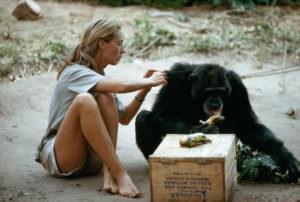
Jane’s most amazing discovery was that chimps make and use tools. The chimps in the groups Jane studied over three generations, used stalks of grass to dip into holes in the earth to capture termites. They modified these tools by breaking off the ends of the stalks when they became less effective.
Twigs were used as similar tools after their leaves were removed. The chimps also made sponges by wadding up leaves. They dipped the sponges into tree holes that had collected rainwater and then drank from the sponges. Jane also learned that chimps were not solely plant eaters. They hunted and ate mammals, including baboons, bush pigs, antelope, and monkeys. And Jane observed aggression in chimps which made them seem even more like humans to her.
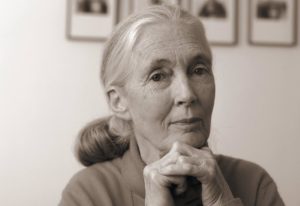
Jane Goodall lectures around the world stressing the importance of “creating a balance between humans and the natural world.” She established the Jane Goodall Institute and Roots and Shoots, a program for children. Visit these programs at: https://www.janegoodall.org
“Only if we understand, can we care. Only if we care, we will help. Only if we help, we shall be saved.” – Jane Goodall
If you like this post, then please consider sharing it and leaving a comment below. Thank you! Barbara Lowell, Children’s Author
You may like, Books For Kids: Jane Goodall https://barbaralowell.com/books-for-kids-jane-goodall
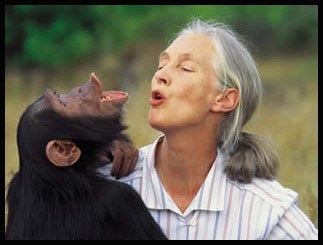
Always love reading about Jane Goodall. She’s wonderful. Get video, too! Can’t believe she’d go around barefoot in the jungle.
Or *great video* 🙂
Thank you! The video and the picture books are wonderful. I had lots of fun reading about and watching Jane Goodall.